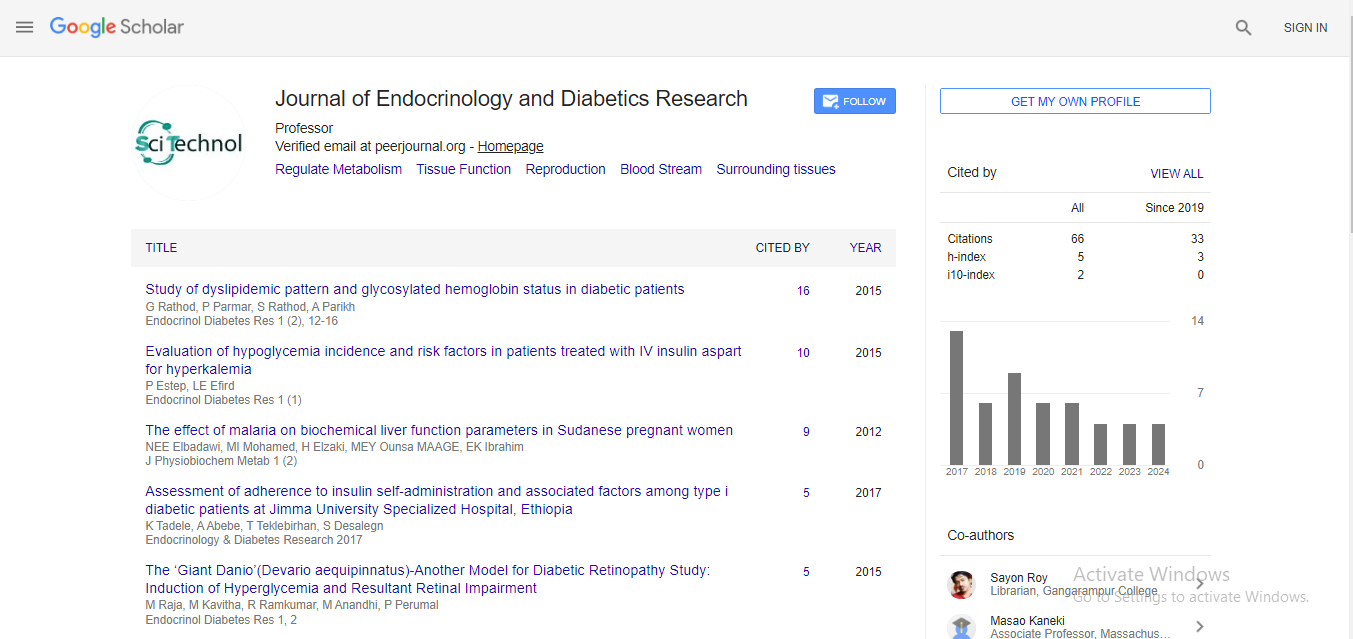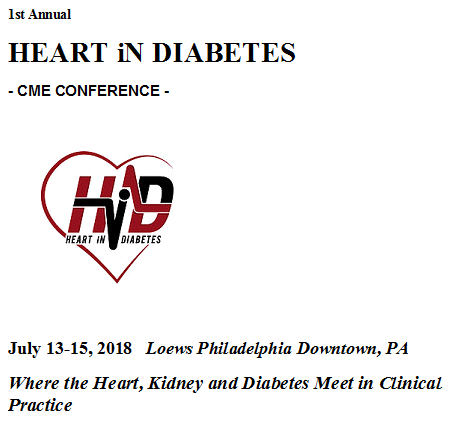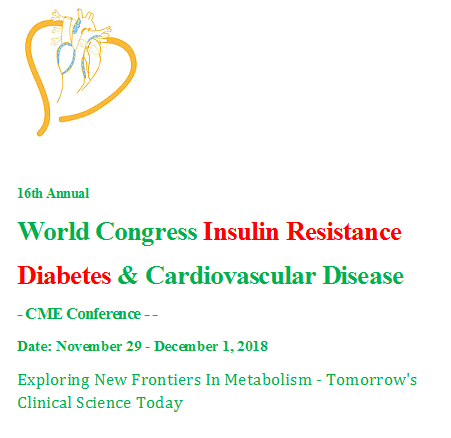Perspective, Endocrinol Diabetes Res Vol: 10 Issue: 6
Endocrine Mechanisms of Insulin Resistance: Implications for Diabetes Prevention and Therapy
Ekaterina Kenneth*
1Department of Digestive and Endocrine Surgery, Dijon University Hospital, Dijon, France
*Corresponding Author: Ekaterina Kenneth,
Department of Digestive and Endocrine
Surgery, Dijon University Hospital, Dijon, France
E-mail: ken.ek52897@hotmail.com
Received date: 26 November, 2024, Manuscript No. ECDR-24-154192;
Editor assigned date: 28 November, 2024, PreQC No. ECDR-24-154192 (PQ);
Reviewed date: 12 December, 2024, QC No. ECDR-24-154192;
Revised date: 20 December, 2024, Manuscript No. ECDR-24-154192 (R);
Published date: 27 December, 2024, DOI: 10.4172/2324-8777.1000429.
Citation: Kenneth E (2024) Endocrine Mechanisms of Insulin Resistance: Implications for Diabetes Prevention and Therapy. Endocrinol Diabetes Res 10:6.
Description
Insulin Resistance (IR) is a fundamental pathophysiological feature in Type 2 Diabetes (T2D) and a precursor to a wide range of metabolic disorders. The endocrine system plays a major role in regulating insulin sensitivity through complex hormonal pathways. Dysregulation of these pathways leads to impaired glucose metabolism and the progression of diabetes. This review discusses the endocrine mechanisms underlying insulin resistance, highlights their implications for diabetes prevention and therapy and gives potential therapeutic targets.
Insulin Resistance (IR) is defined as a diminished biological response to insulin in target tissues, such as skeletal muscle, adipose tissue and the liver. It is a sign of Type 2 Diabetes (T2D) and often precedes its onset by years or decades. Endocrine hormones, including insulin, glucagon, adipokines and incretins, orchestrate glucose homeostasis. Dysregulation of these hormones disrupts insulin signaling pathways, contributing to IR and subsequent hyperglycemia. Understanding the endocrine mechanisms underlying IR is for developing effective prevention and therapeutic strategies for diabetes.
Insulin is the primary anabolic hormone regulating glucose uptake, lipid metabolism,and protein synthesis. Binding of insulin to its receptor triggers the Phosphoinositide 3-Kinase (PI3K)-Akt signaling pathway, promoting glucose uptake via glucose transporter type 4 (GLUT4) in skeletal muscle and adipose tissue. In Insulin resistance, defects in insulin receptor signaling, reduced GLUT4 expression and impaired Akt activation diminish glucose uptake, leading to hyperglycemia. Chronic hyperinsulinemia, a compensatory response to IR, further exacerbates the condition by desensitizing insulin receptors.
Glucagon, secreted by pancreatic α-cells, counteracts insulin by stimulating hepatic gluconeogenesis and glycogenolysis. In IR, hyperglucagonemia contributes to elevated hepatic glucose production, worsening hyperglycemia. Therapeutic strategies targeting glucagon receptor antagonists and dual incretin receptor agonists aim to reduce this effect. Adipose tissue functions as an endocrine organ, secreting adipokines that modulate insulin sensitivity and glucose metabolism.
Adiponectin Enhances insulin sensitivity by activating AMPactivated protein kinase (AMPK) and peroxisome proliferatoractivated receptor (PPAR) pathways. Reduced adiponectin levels in obesity and T2D correlate with Insulin resistance. Leptin Regulates appetite and energy expenditure but also modulates insulin action. Leptin resistance in obesity complicates its role in improving IR. Resistin Promotes IR by increasing pro-inflammatory cytokines and impairing insulin receptor signaling.
Incretins, such as Glucagon-Like Peptide-1 (GLP-1) and Glucosedependent Insulinotropic Peptide (GIP), enhance insulin secretion in response to oral glucose. GLP-1 receptor agonists improve insulin sensitivity, reduce glucagon secretion and promote weight loss, making them effective in diabetes management. Chronic low-grade inflammation is a key contributor to IR. Pro-inflammatory cytokines (e.g., TNF, IL-6) secreted by adipose tissue interfere with insulin signaling by activating c-Jun N-Terminal Kinase (JNK) and Nuclear Factor B (NF-B) pathways, which inhibit Insulin Receptor Substrates (IRS).
Excess Free Fatty Acids (FFAs) and ectopic fat accumulation in liver and muscle impair insulin signaling. Lipotoxicity disrupts mitochondrial function and activates Protein Kinase C (PKC), further reducing insulin sensitivity. Oxidative StressIncreased oxidative stress from reactive oxygen species (ROS) production damages cellular components, including those involved in insulin signaling. Antioxidant therapies targeting oxidative stress may ameliorate IR. Prolonged nutrient excess induces Endoplasmic Reticulum (ER) stress, activating Unfolded Protein Response (UPR) pathways that impair insulin signaling. Therapeutics targeting ER stress is potential strategies to combat IR.
Metformin activates AMPK, reducing hepatic gluconeogenesis and improving peripheral insulin sensitivity. Thiazolidinediones (TZDs) activate PPAR, promoting adipocyte differentiation and reducing ectopic fat deposition. GLP-1 receptor agonists and DPP-4 inhibitors improve insulin sensitivity and glycemic control while promoting weight loss. Therapies targeting inflammatory pathways, such as IL-1 inhibitors and JNK inhibitors, show promise in mitigating IR. Compounds targeting oxidative stress, such as N-Acetyl Aysteine (NAC) and SIRT1 activators, may improve insulin sensitivity. Therapies targeting hormonal pathways, such as adiponectin analogs or leptin-sensitizing agents, offer potential for addressing endocrine contributors to IR.
Gut microbiota influence insulin sensitivity via Short-Chain Fatty Acids (SCFAs) and bile acid signaling. Probiotics, prebiotics and Fecal Microbiota Transplantation (FMT) are being explained as therapeutic options. Epigenetic modifications, such as DNA methylation and histone acetylation, regulate insulin signaling genes. Therapies targeting epigenetic changes may reverse IR induced by environmental and genetic factors. Integrating multiple therapeutic approaches, such as GLP-1 receptor agonists with anti-inflammatory agents, may provide synergistic benefits in managing IR and diabetes.
Effective prevention strategies require early identification of at-risk individuals and addressing modifiable risk factors. Public health interventions focusing on obesity reduction, physical activity promotion and dietary education is for mitigating the global burden of diabetes.
Conclusion
Insulin resistance arises from complex interactions between endocrine, inflammatory and metabolic pathways. Understanding these mechanisms has led to the development of targeted therapies that improve insulin sensitivity and glycemic control. Lifestyle interventions, combined with pharmacological and therapies, offer a multi-faceted approach to preventing and managing diabetes. Future research should focus on integrating genetic, epigenetic and microbiome data into personalized medicine strategies to enhance treatment outcomes.
 Spanish
Spanish  Chinese
Chinese  Russian
Russian  German
German  French
French  Japanese
Japanese  Portuguese
Portuguese  Hindi
Hindi 


